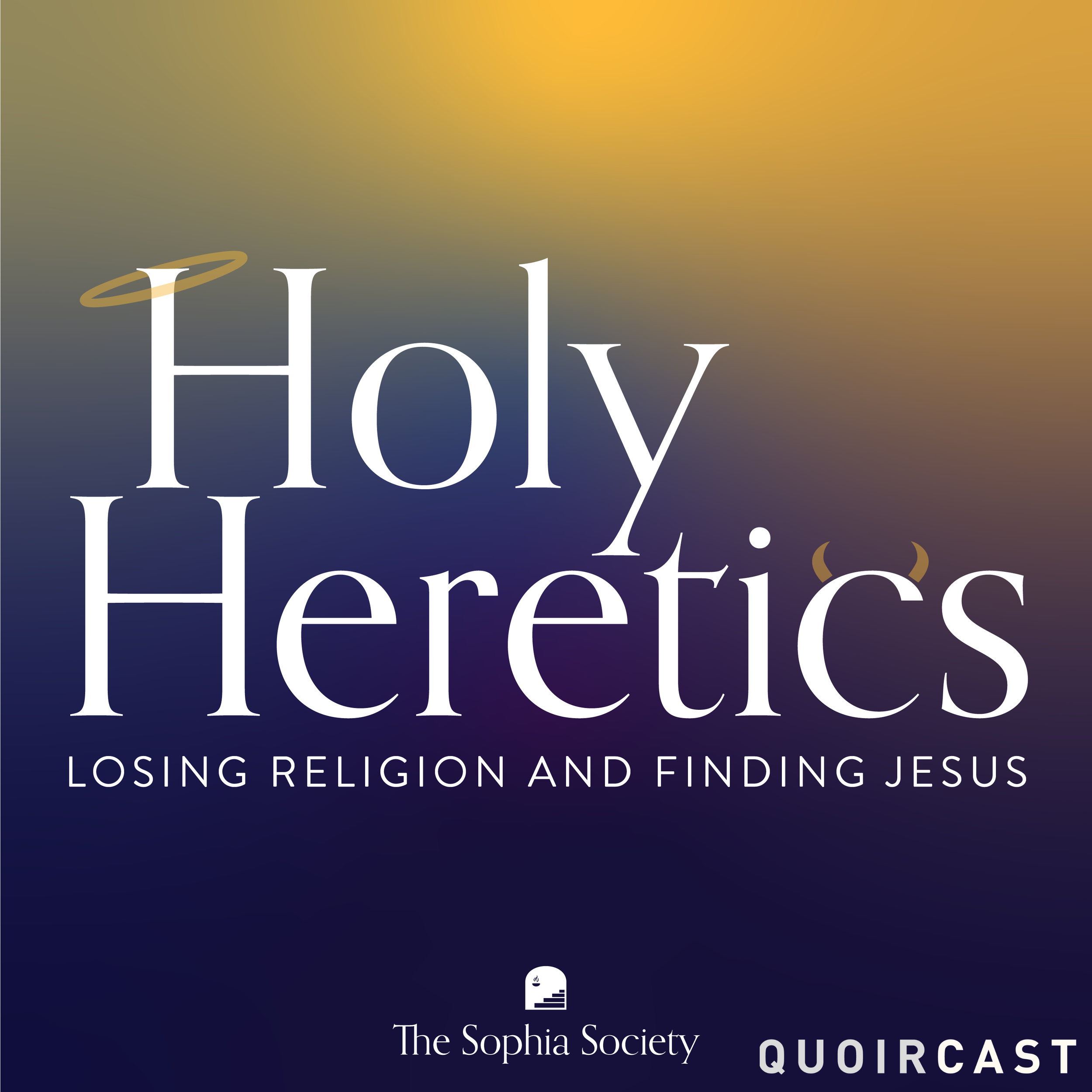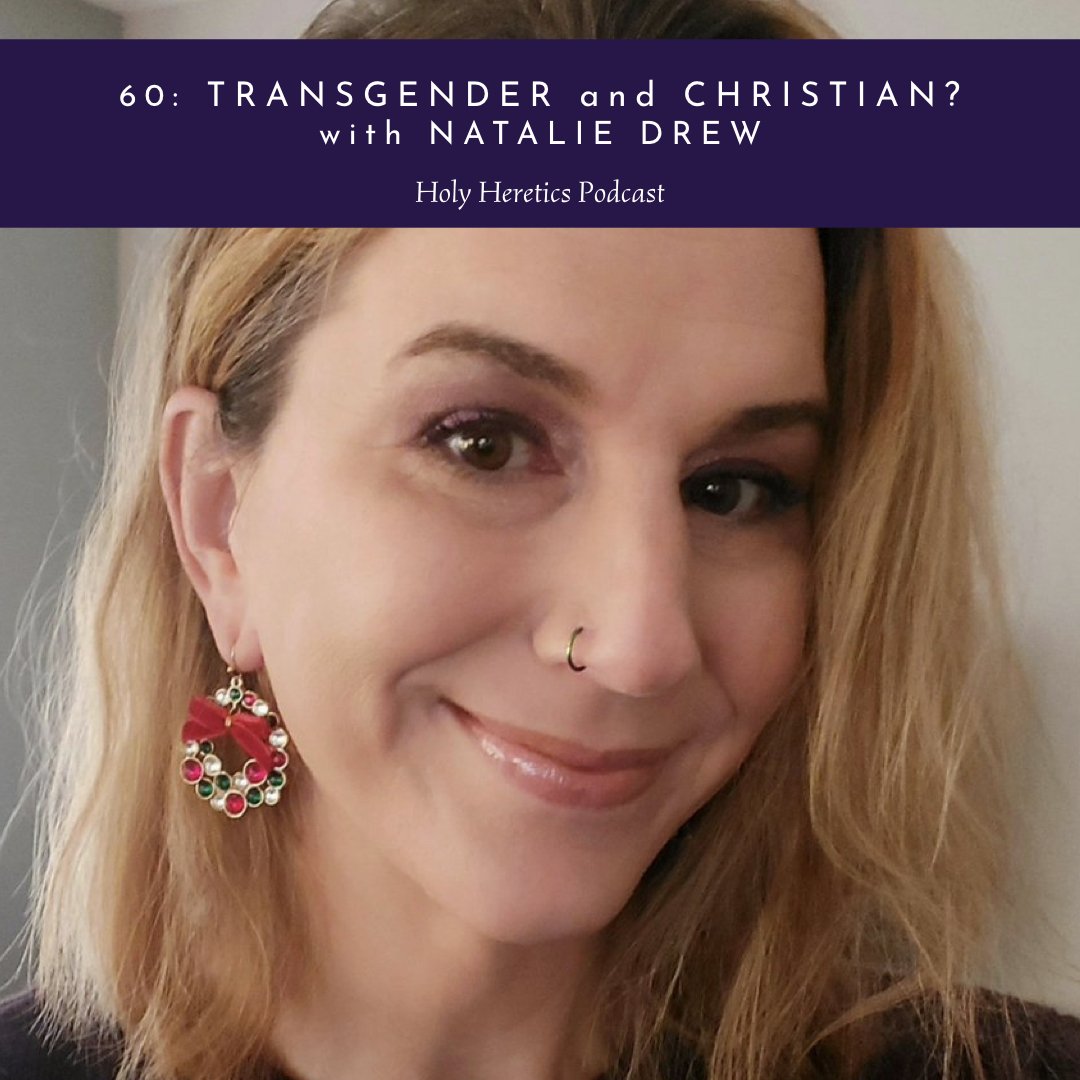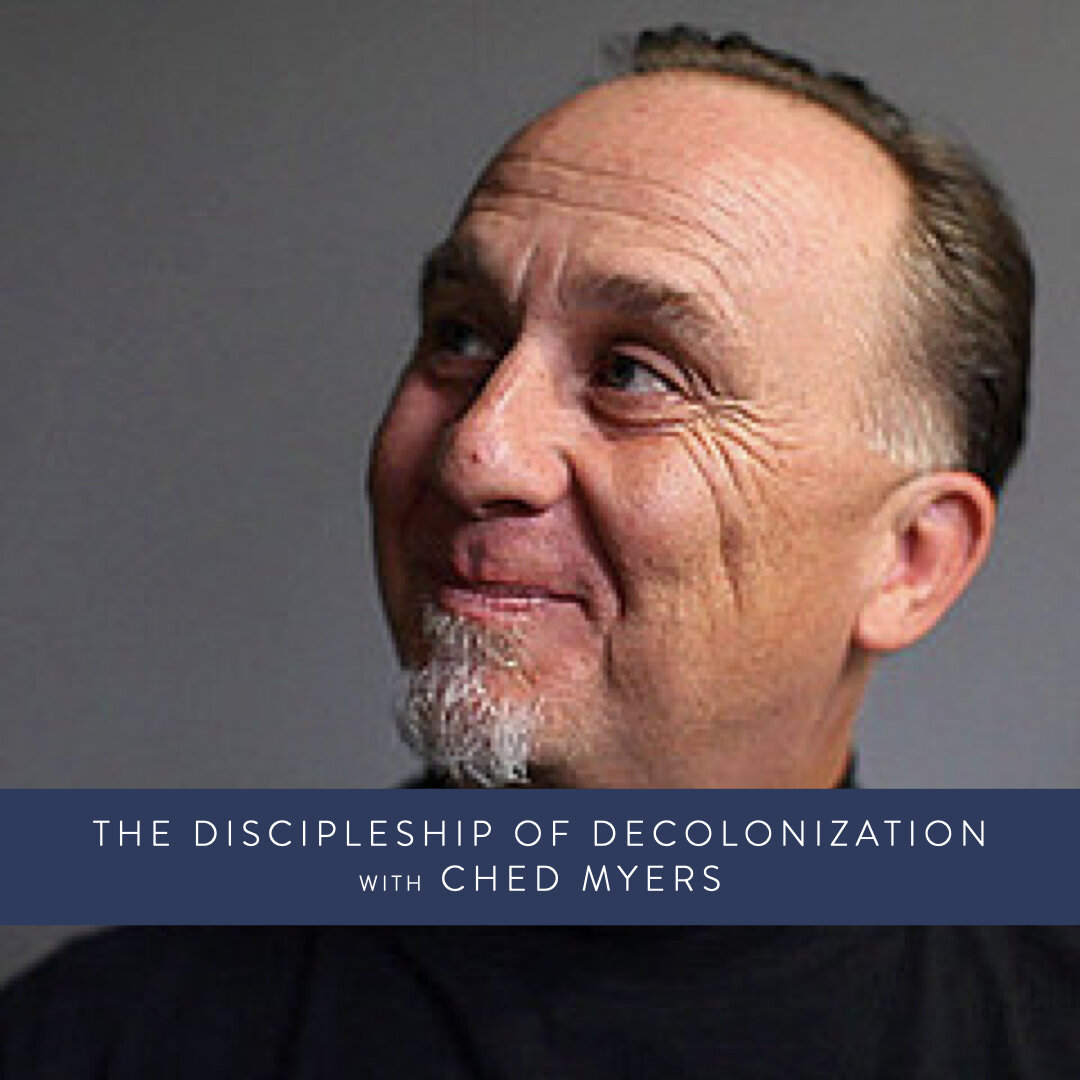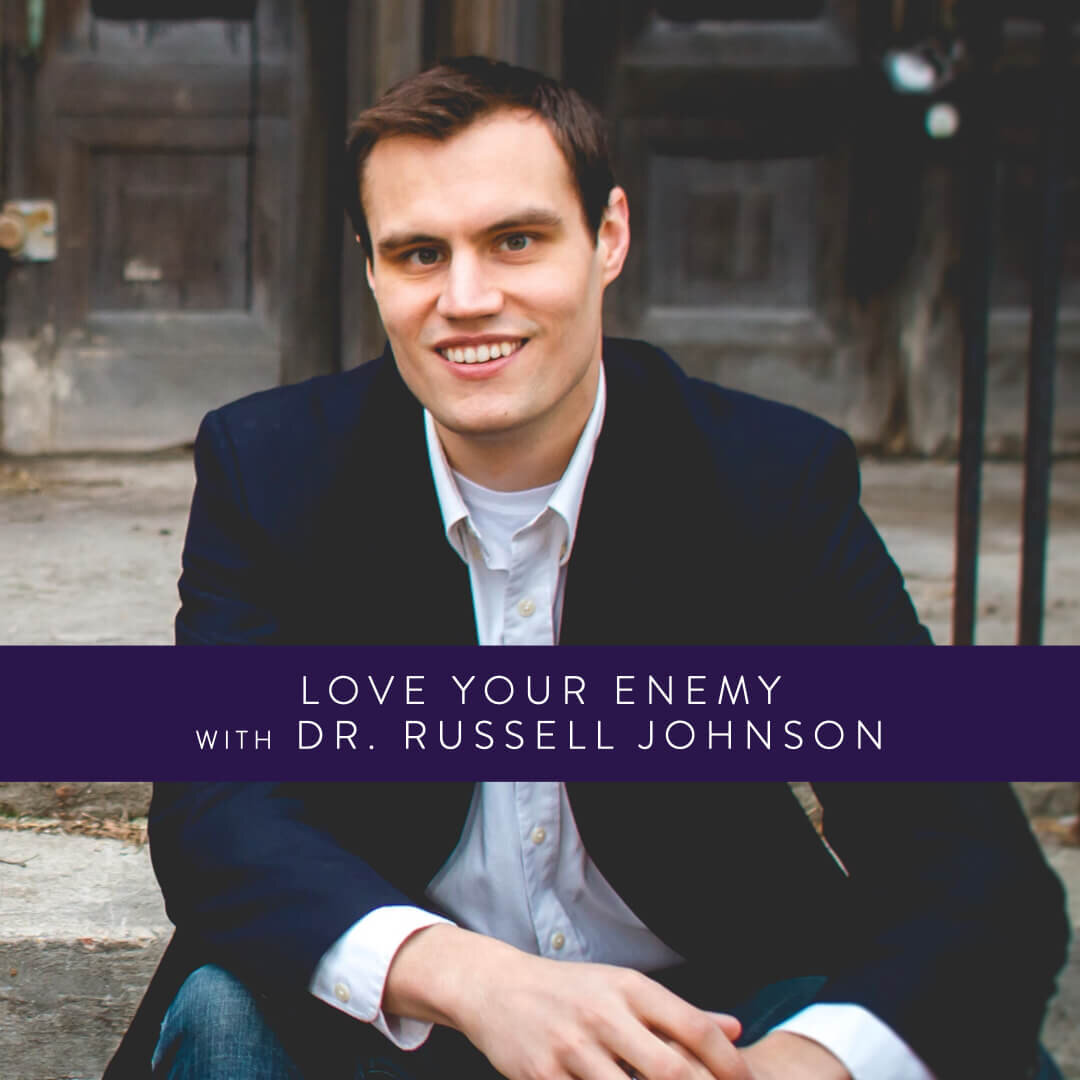Why I Left Evangelicalism
My faith deconstruction journey began the minute I realized God is nonviolent, or at least that God is in recovery from violence.
It started like this.
In May 2011, Navy Seals located and killed Osama Bin Laden at his secret compound. Ten years of recognizance, spying, searching, and planning finally led to the death of the 9/11 mastermind. I was still an evangelical Christian, as well as an aspiring blogger. I wrote a thoughtful article about justice being served to America’s most wanted. My words weren’t incredibly original. Countless evangelicals used his death to preach the myth of redemptive violence. In evangelicalism, God’s justice is punitive, not restorative. Capturing the ethos of the moment, Biola University professor John Mark Reynolds wrote, “An enemy of the United States has received justice for his crimes. This is a moment for solemn thanksgiving…The Lord Jesus commands Christians to love their enemies, but that is not incompatible with rejoicing in their death.” Interesting theology.
I was too far down the evangelical rabbit hole to recognize the insanity of this position. In fact, I remember being quite proud of my post. I received affirmations from readers and friends in the military. Like me, they believed they were fighting the Lord’s battles, vanquishing evil in God’s name, one dead bad guy at a time. However, one particular response changed my spiritual trajectory forever.
I was working for my alma mater, Milligan University. Milligan is a Christian liberal arts school, known at the time for having the courage to challenge the status quo. I had just hit “send” on my blog post and walked up to the cafeteria for lunch. As I finished eating, one of my former professors approached me.
“Gary Alan, can I talk with you for a minute?” Dr. Phil Kenneson asked. “Sure,” I replied, with a bit of wonderment.
“I read your article and appreciate your perspective. You articulated what many Americans are feeling today. From one Jesus follower to the next, can I offer you a different perspective?”
“Of course,” I said.
I will never forget that moment, that conversation, and his compassionate honesty. I can still see us standing on the hill outside Sutton Hall. Dr. Kenneson, a protégé of Stanley Hauerwas, briefed me on the high points of Christian nonviolence. I found it intriguing, but I was not convinced. My former professor challenged me to see the incident not from my lens as a citizen in the American empire, but as a sojourner in the Kingdom of God. That shift changed everything.
After our brief conversation, Dr. Kenneson said, “Well, I read something of yours. Will you read something of mine?”
I returned to my office and there, awaiting me, was an emailed article about nonviolent resistance and active peacemaking. I immediately realized my evangelical upbringing was not enough. All my hubris, all my flag-waiving and military-supporting evangelical faith exposed in one article about the nonviolent Jesus. I often wonder what my life would look like today if I had responded defensively to Phil’s intervention, if I had lacked the humility to admit I might be wrong.
Phil introduced me to the nonviolent Jesus, the God made flesh who would rather die for his enemies than kill them. But I still had questions. Why is the God of the Old Testament so often depicted as a genocidal maniac? Are God and Jesus not the same? What about church history? Were the original Jesus followers also nonviolent? And most importantly, what the hell are we supposed to do if someone is causing harm? Just sit back and let it happen? How do you stop evil if you are passive? I brought all these questions to Phil over a period of a few weeks that summer, and each time, he would smile, engage in conversation, and then hand me a book to read. At one point I remember him chuckling to himself, looking at me, and saying…
“Gary Alan, I’ve finally figured out why you are so perplexed by this topic. You think you are the first Christian to ever deal with this dilemma. Don’t worry, faithful followers of Jesus have been wrestling with God’s justice and how to live peacefully in a violent world for almost two thousand years. Welcome to the conversation.”
With my tail between my legs, I left his office with even more questions, but I dared not ask them. However, I did the work. I read his books, engaged openly in conversation, and recognized Phil was a lot farther down the spiritual road than me. Bit by bit, my certain evangelical world unraveled. I remember thinking, “If they lied to me about this, what else have I been lied to about?” It took me several more years to unpack that question.
But, I still had questions, starting with the biggest one. Is God violent?
The Old Testament
Let me be candid. I struggle with great swaths of the Old Testament. I haven’t read it consistently for years because outside of the Prophets and a few scant diverging voices in the Torah, the God most represented in that half of the Bible is a tribal, genocidal maniac. The texts explicitly tell us God orders ethnic cleansing, the stoning of children, and countless wars of aggression. I find those texts abhorrent, vile, and utterly uninspired. However, there are two threads running throughout the Hebrew Scriptures. One is the voice of Jewish nationalists—kings, warriors, and bent prophets using God to justify their violence. The second thread is the voices of true prophets, women, the marginalized, and those on the outside the power structures painting a radically subversive picture of Yahweh. People like Isaiah, Micah, Jeremiah, and Amos. Instead of a punitive, violent God, they introduce us to the God of restorative justice. These minority opinions subvert the dominant narrative, reminding us that God seeks shalom for all people. We read in Isaiah:
“The wolf shall live with the lamb, the leopard shall lie down with the kid, the calf and the lion and the fatling together, and a little child shall lead them. The cow and the bear shall graze, their young shall lie down together; and the lion shall eat straw like the ox. The nursing child shall play over the hole of the asp, and the weaned child shall put its hand on the adder’s den. They will not hurt or destroy on all my holy mountain; for the earth will be full of the knowledge of the Lord as the waters cover the sea.”
Later in Micah we read:
“He shall judge between many peoples, and shall arbitrate between strong nations far away; they shall beat their swords into plowshares, and their spears into pruning hooks; nation shall not lift up sword against nation, neither shall they learn war anymore; but they shall all sit under their own vines and under their own fig trees, and no one shall make them afraid; for the mouth of the Lord of hosts has spoken.”
A closer look at the Old Testament reveals a vision of shalom, not violence. Shalom means right relationships in every direction—with God, with neighbor, and with the earth. “The central vision of world history in the Bible is that all of creation is one, every creature in community with every other, living in harmony and security toward the joy and wellbeing of every other creature,” writes Old Testament scholar Walter Brueggemann. God’s kingdom is peaceful. The end goal of Creation isn’t Armageddon, it is everlasting peace. As God’s people, we are called to manifest this future vision now, to make God’s peaceful future a reality in the present. Why else do we pray, “Thy kingdom come, they will be done on earth as it is in heaven?” We are to live as though every sword has already been beaten into plowshares. In so doing, we hasten the coming of God’s kingdom.
The Jesus Movement
In every way, Jesus rebuked the path of violence, control, domination, hierarchy, and power. Unlike the loudest Christians in America, he refused to force himself on anyone. Jesus refused to allow his followers to proclaim him Messiah until he redefined the title in terms of the cross and not a sword. He withdrew from the crowd, trying to “take him by force to make him king.” He commanded his disciples to “Love your enemies, and do good to those who persecute you.” At every stage of his public career, he renounced violence as the means to bring about God’s kingdom. He rebuked James and John for wanting to call down thunder and chastised Peter for drawing his sword.
Even in death, Jesus was nonviolent. “He refused to lift a finger in his own defense, scolds those who do try to defend him with the sword, and rejects calling down ‘legions of angels’ to fight a holy war against his enemies,” writes theologian Richard B. Hays. For Jesus, nonviolence wasn’t some progressive appendage to the Gospel. It is the very heart of what it means to follow him. Jesus was nonviolent because God is nonviolent.
The first Christians understood nonviolence to be the sin qua non of discipleship. So much so that there wasn’t even a word for pacifism during the first four centuries of Christianity because to call yourself a Christian meant you were universally nonviolent? No extant Christian text or manuscript prior to Constantine’s corruption of Christianity in the fourth century says military service is ever legitimate. According to early church father Tertullian, “In disarming Peter, Christ disarmed us all.” Athenagoras, a Christian apologist based in Athens during the second century wrote, “We have learned not only not to return blow for blow, nor to sue those who plunder and rob us, but to those who smite us on one cheek to offer the other also, and to those who take away our coat to give our overcoat as well.”
The first followers of Jesus took the Master seriously and literally when he asked them to love their enemies, and do good to those who persecute you. Since Jesus was universally nonviolent, they were universally nonviolent. In fact, for over three hundred years, the Roman authorities forbade Christians from serving in the military because of their nonviolence. But in the fourth century, almost everything changed.
The Constantinian Shift
When the Roman emperor Constantine converted to Christianity and legalized the faith in 313 C.E., Christianity entered a dramatically new period. Within a hundred years, only Christians could serve in the Roman army. Quite a turnaround. In the years after Constantine, imperial theologians developed the basic framework of the just war tradition. Once Christianity gained power, the wheels came off. The cross, once the symbol of Roman persecution, led the Roman armies off to war. Christianity regressed from a movement of people who lived like Jesus into a movement of people who believed in Jesus.
Despite this, the pacifist tradition continued in the Middle Ages. Writers like Pelagius, St. Francis, Benedict of Nursia, and others resisted the urge to conquer and crusade. These minority opinions have almost completely been silenced in American churches.
Nonviolent Resistance, Not Pacifism
Nonviolent resistance, also known as nonviolent action or civil resistance, is a method of achieving social, political, or economic change without the use of violence. Historically, various movements and individuals worldwide have employed nonviolent resistance, such as Mahatma Gandhi in India and Dr. Martin Luther King Jr. during the Civil Rights Movement.
Contrary to what many assume, nonviolence isn’t meekness in the face of evil, it is the courageous and creative task of disarmament. Active peacemaking is a way to fight against injustice without using violence. It uses the transformative power of love to resist oppression. It says that the means are the ends, that the way to peace is peace itself. “Love of enemies does not necessarily ease tensions; rather it challenges the whole system and becomes a subversive formula for true personal and national liberation,” writes liberationist theologian Gustavo Gutierrez. Therefore, it shouldn't surprise us that peacemakers like Dr. Martin Luther King, Nelson Mandela, and Mahatma Gandhi do not appear peaceful.
According to American labor leader and civil rights activist Cesar Chavez:
“Nonviolence is a very powerful weapon. Most people don’t understand the power of nonviolence and tend to be amazed by the whole idea. Those who have been involved in bringing about change and see the difference between violence and nonviolence are firmly committed to a lifetime of nonviolence, nor because it is easy or it is cowardly, but because it is an effective and very powerful way.”
Nonviolent resistance is a method of struggle in which unarmed people confront an adversary by using collective action. It picks sides; it enters the fray in-between the perp and the victim to take on suffering rather than sit idly by. Nonviolent resistance is a way of life, a way of confronting aggression through courage, imagination, and the ability to disarm evil creatively. Nonviolent tactics include protests, boycotts, social media campaigns, sit-ins, and civil disobedience. With no real power to force a ceasefire, many of us continue to express outrage against the State of Israel and their genocide of the Palestinian people through nonviolent direct action. It’s the only weapon we have against the powers and principalities of this world. Why do these seemingly innocuous actions matter? Because empirical evidence has shown that nonviolent resistance is twice as effective as armed struggle in achieving major political goals.
Here in America
Americans love their guns, their military, their wars, and domination. It’s why we have nearly 800 military bases in over 70 countries. It’s also why the U.S. has only been at peace for seventeen years since 1776. War is also big business. The White House recently told Congress it plans to send more than $1 billion in new weapons to Israel in order to kill more Palestinian women and children. But we are the good guys, right? We are a global, hegemonic superpower, and we will kill anyone who doesn’t believe it.
The United States has the largest military on the planet and 70% of our active military members are professing Christians. When the American military kills her enemies, odds are a Christian pulled the trigger. Worse, Christians are often killing other Christians simply because their uniform is a different color. We bless our bombs and pray for the annihilation of our enemies. Just a few days ago, former presidential contender Nikki Haley wrote "Finish Them!" on an Israeli artillery shell destined for Gaza. Late last week, The House of Representatives passed a massive defensive bill including a provision that would automatically enroll young men between the ages of 18 and 26 for the Selective Service. The House's version of the National Defense Authorization Act (NDAA), which would authorize $895 billion in military spending, passed by a vote of 217–199.
War is America’s greatest liturgical act. It is our highest form of worship. The habitual business of war throughout American history has been used to maintain the bonds of white male solidarity and to expand the boundaries of whiteness, writes Walter Hixson. According to Carolyn Marvin and David Ingle in their book Blood Sacrifice and the Nation:
“Americans have rarely bled, sacrificed or died for Christianity or any other sectarian faith. Americans have often bled, sacrificed and died for their country. This fact is an important clue to its religious power. Though denominations are permitted to exist in the United States, they are not permitted to kill, for their beliefs are not officially true. What is really true in any society is what is worth killing for, and what citizens may be compelled to sacrifice their lives for."
Imagine how different the world would be if Christians simply decided not to kill another human being. The United States military would drastically shrink, and world leaders would be forced to deal with conflict through diplomacy instead of violence. But scholar and Christian ethicist Stanley Hauerwas is right, “We cannot get rid of war because war has captured our imaginations. We (Americans) quite simply cannot comprehend a world without war.”
Most of us in the deconstruction community probably don’t own a lot of guns. Fewer still will ever be in the position to take a human life. But that doesn’t mean violence and aggression aren’t daily temptations. The polarizing political landscape, America’s involvement in the genocide in Gaza, and a looming presidential election has most of us on edge. I may not attack you with my fists, but I often crucify my religious and political opponents with my mouth. Buddhist teacher Pema Chodron writes, “NOT CAUSING HARM obviously includes not killing or robbing or lying to people. It also includes not being aggressive—not being aggressive with our actions, our speech, or our minds.”
In his book, The Dignity of Difference: How to Avoid the Clash of Civilizations, Jonathan Sacks, the Chief Rabbi of the United Hebrew Congregations of Britain and the Commonwealth, argues that the “greatest single antidote to violence is conversation, speaking our fears, listening to the fears of others, and in that sharing of vulnerabilities discovering a genesis of hope.” I am thankful for that one conversation in 2011 with my former professor. It not only gave me hope, but a new future.
The Peaceable Kingdom
As Christ followers, we wrestle with the tension between the already and not yet reality of God’s kingdom. We are called to be peacemakers in a world of war. None of us has the power to stop genocide or deter World War III, but we can love mercy, walk justly, and live nonviolently. To help, ask yourself these questions:
Does my job cause suffering to the poor or the planet?
Do my eating habits support systems of animal cruelty?
Is there anyone in my life I am trying to control?
Is my religious tradition leading me to impose my beliefs on others?
In what ways am I hurting myself through negative talk, addictive behaviors, or maladaptive coping mechanisms?
What or who am I afraid of and is my fear driving me to act aggressively?
Who is my enemy and how am I treating them?
How am I using my power and privilege for active peacemaking?
In what ways do I benefit from my nation’s military and war making institutions?
Peace isn’t the absence of tension, it is the presence of love.
Sometime this week, pause to consider what nonviolence might look like in your life. Is someone causing you harm? If so, how do you creatively and courageously confront them nonviolently? If you are privileged, how can you insert yourself between oppressors and the oppressed in peaceful solidarity with the hurting? For those of us deconstructing our faith, how do we deconstruct nonviolently?
Being a peacemaker often includes the ability to seize the initiative, reverse power dynamics, assert your own humanity, and break cycles of humiliation and shame. It is certainly not passive. It is often chaotic and awkward. But after a while, you look forward to being an instrument of peace in a violent world.
Gary Alan Taylor





Following the example of other authoritarians, Donald Trump wants us to burn cars. He wants us to throw rocks. He wants images of chaos — especially violence against police or National Guard troops — to flood the evening news. These are precisely the results he wants: to manufacture chaos as a means of justifying repression. We can’t give him what he wants.